The history of Palm Springs is intricately woven with the stories of its Black pioneers whose resilience and contributions have left an indelible mark on the city's cultural fabric. From the early 20th century onwards, Black pioneers ventured into the desert oasis, seeking refuge from racial discrimination and segregation prevalent elsewhere in the United States. Despite facing numerous challenges, these trailblazers established vibrant communities, built businesses, and significantly influenced the development of Palm Springs. Their narratives, often overlooked in mainstream historical accounts, illuminate the rich tapestry of diversity and perseverance that characterizes the city's past and present.
Cora Crawford
Cora Crawford’s journey to becoming a beloved community leader began when she moved to Palm Springs in 1951 with her husband, Samuel. They settled on Section 14, within the Agua Caliente Indian Reservation, where they started a family. By the mid-1950s, the tribe's plans to develop the land forced the Crawfords to find a new home. After facing discrimination while trying to purchase a home in Gateway Estates, the Crawfords eventually bought a lot and, with a loan from San Gorgonio Savings and Loan, built a house in 1960, where they became part of a thriving community of families from Section 14.
In the 1960s, Cora took advantage of the War on Poverty programs and became certified to teach through the Head Start initiative. She joined the Palm Springs Child Development Center, which opened in 1964 and quickly gained recognition as one of the top preschool facilities in California. Cora’s passion for education and dedication to underserved children made her a standout figure in the community. She later became the center's director, expanding its hours and programs and ensuring the children in her care were well-prepared for school.
Cora’s leadership extended beyond education. In the 1970s, she helped establish the Unity Community Center, offering a variety of services, including sports, tutoring, legal counseling, and health screenings. By the 1980s, the Child Care Center had grown to serve hundreds of children from diverse backgrounds. Cora was also a founding member of the Palm Springs Black History Committee, organizing events and raising funds for scholarships to send older children to college.
Cora Crawford passed away on April 6, 2021, at 87, leaving behind a legacy of service and love for her community. She is remembered not only for her work in education and child development but for her tireless efforts in building infrastructure that supported working-class families. Cora’s impact on Palm Springs is profound, and her dedication to nurturing future generations lives on in the children and families she helped.
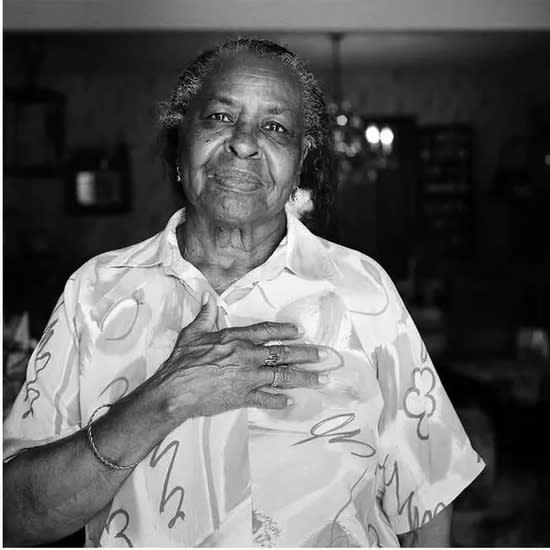
James O. Jessie
We remember the legacy of Jessie O. James, a remarkable community leader whose dedication to youth and service resonates today. Jessie, known affectionately as "Big Jess," was the Director of Parks and Recreation for the City of Palm Springs. His work focused on at-risk youth, particularly those at the Desert Highland Unity Center, where he mentored and guided young people with compassion and care.
“Uncle James,” as he was fondly called, was a father figure to many of the children in the community. Beyond his role at the center, he was passionate about coaching youth baseball and softball, instilling teamwork and discipline in young athletes. He also played a pivotal role in organizing the Palm Springs Black History Parade and Town Fair, celebrations that continue to honor the community’s rich cultural heritage every February.
One of Jessie’s most cherished traditions was taking a group of at-risk kids on an annual fishing trip. On one trip in 2000, tragedy struck when a young boy fell out of the boat. Without hesitation, Jessie jumped in to save him. Tragically, he was unable to save himself. Jessie lost his life that day on August 12, 2000, while selflessly helping others. His bravery was recognized posthumously when he was awarded the Medal of Valor at his funeral. The boy he saved went on to name his son James, ensuring that Jessie’s spirit lives on in future generations.
In tribute to his tireless work and profound impact, the Desert Highland Unity Center was renamed the James O. Jessie Desert Highland Unity Center, a lasting testament to the man who gave so much to his community.
480 Tramview Road
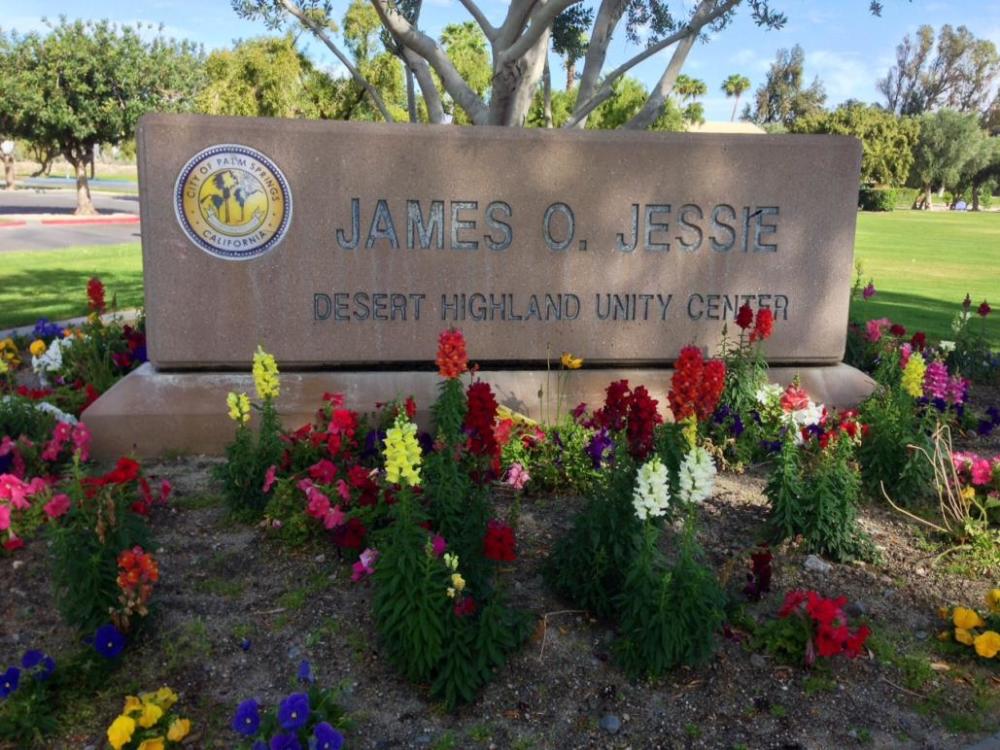
480 Tramview Road. Open Mon - Fri., 9 am - 6 pm. The center is for community members and provides basketball, volleyball, badminton, indoor games, a weight room, and a community room/game room, among other programs.
Paul R. Williams
Architect Paul R. Williams (1894 - 1980) broke racial barriers when he became the first African American member (and later, Fellow) of the American Institute of Architects (AIA), as well as a civic leader. 1920, he was appointed to the first Los Angeles City Planning Commission. The following year, he became a certified architect. Williams opened his practice in 1923, later serving as an architect for the Navy during World War II. He designed almost 2,000 homes in Los Angeles alone, many for wealthy business people and Hollywood stars, in neighborhoods he could not live in.
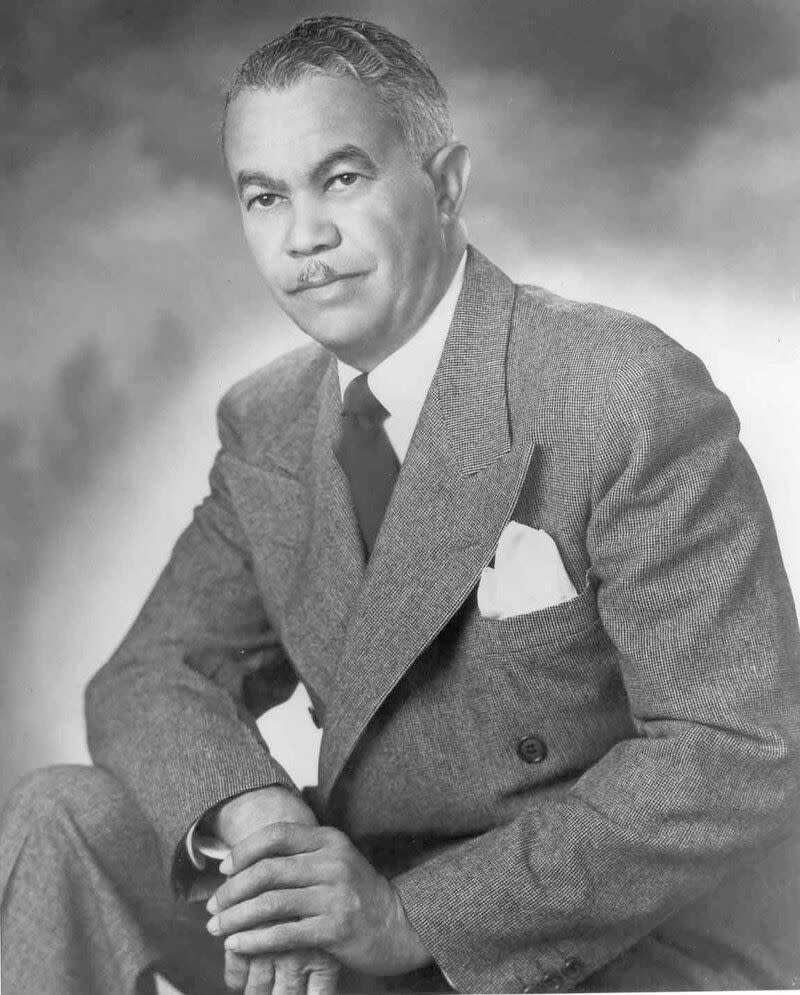
The recently graduated A. Quincy Jones worked for Williams, and the two would later partner on three Palm Springs projects. The Tennis Club Addition, Town & Country Center, and Romanoffs on the Rocks (1950 - demolished).
The Town & Country (1946 - 1955)
169 N Indian Canyon
Williams and several other Palm Springs architects, including Albert Frey, Donald Wexler, and John Porter Clark, contributed to this project, as it was constructed in multiple phases. "The Center" is considered an outstanding example of "desert modern" architecture and conveys the significance of the mid-century period in Palm Springs, which gained international recognition. Grit Development now owns the Town & Country, and the Palm Springs City Council voted to designate it as a Class I Historic site in April of 2016. Grit plans to retain and restore the property.
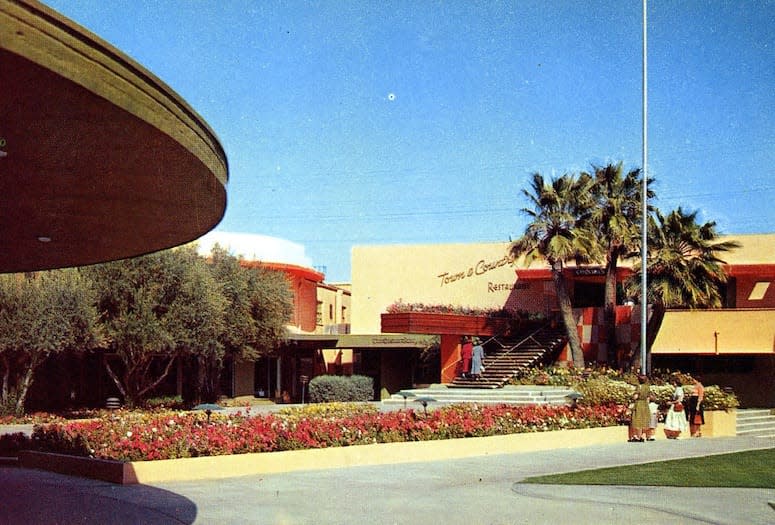
El Mirador Hotel
In 1952, Williams completed a remodel of the glamorous and historic El Mirador Hotel (now the Desert Regional Hospital). It was the second luxury resort in Palm Springs built after the popular Desert Inn and attracted Hollywood stars, wealthy business owners, and many dignitaries. It had an Olympic-size swimming pool and Palm Springs's first 18-hole golf course.
It was later converted to Torney General Hospital, a war hospital during WWII. After the war, the City of Palm Springs temporarily retained control. Various owners controlled the property until 1952, when an investment syndicate of 18 led by F. Roy Fitzgerald and Ray Ryan purchased it for about $900,000 to reopen it as a luxury hotel. They engaged Paul R. Williams to renovate their property. His new design included the addition of a porte-cochere entry, cabanas, sun decks, a new pool area, and an outdoor lounge with a modernistic trellis and retractable canopy.
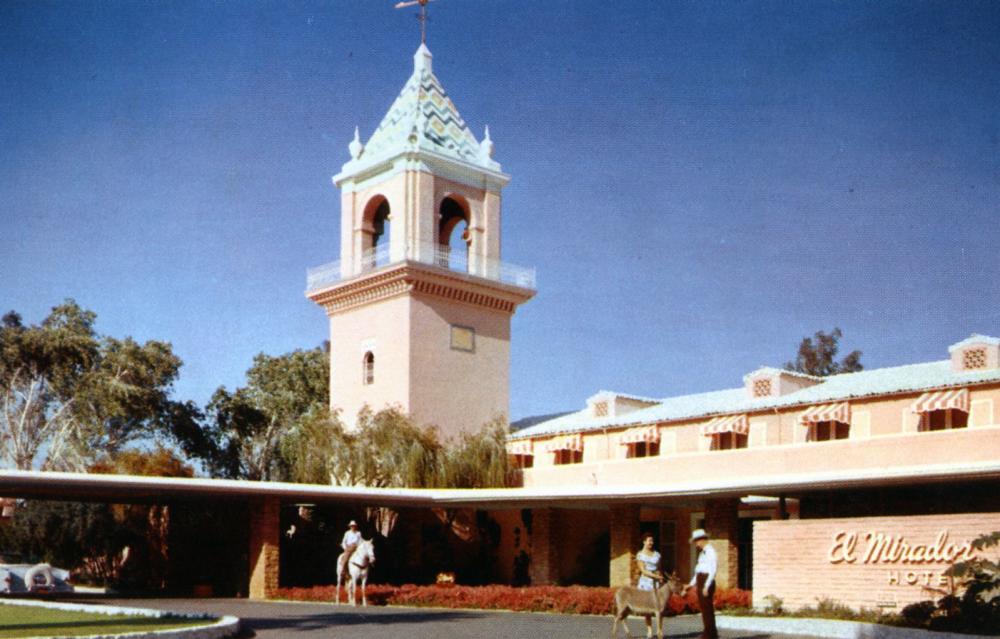
Palm Springs Tennis Club
Williams also worked on the Palm Springs Tennis Club addition in 1946. It was originally built by founding pioneer Pearl McManus and was said to have one of the most beautiful pools in the country. The addition was a more sophisticated version, emphasizing solid volume, the natural wood and stone of the surrounding environment, and unpainted brick and wrap-around glass tying the outdoors to the indoors. The addition included a new main dining room, the Bougainvillea Room, a snack bar, a cocktail lounge with a terrace for outdoor dining, and a lawn terrace for lounging and sunbathing.
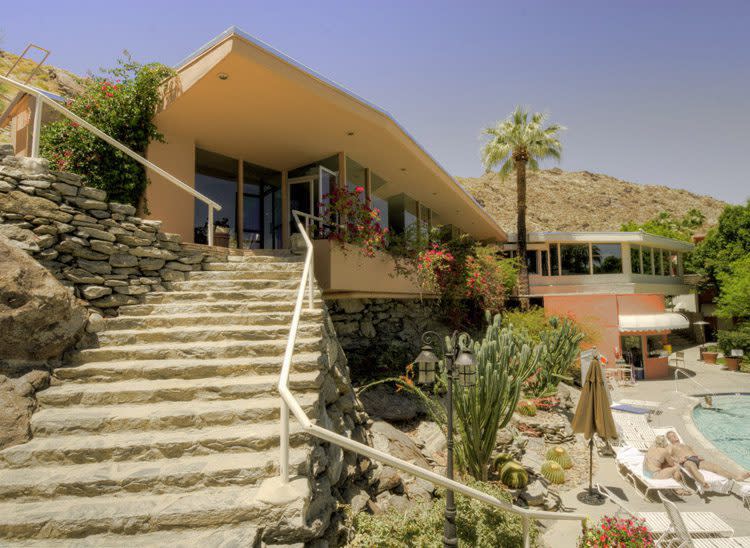
In February 2018, Modernism Week, we dedicated a star for Williams on the Palm Springs Walk of Stars, joining modernist icons Albert Frey, Hugh Kaptur, Donald Wexler, E. Stewart Williams, Richard Harrison, William Krisel, William Cody, A. Quincy Jones, and Richard Neutra.
Lawrence Crossley
The Louisiana-born Lawrence L. Crossley (1899-1962) came to Palm Springs in 1925 and worked for Prescott T. Stevens, owner of the El Mirador Hotel. As a leading black Palm Springs pioneer, Crossley worked his way up from chauffeur to help Stevens design and maintain the El Mirador’s golf course during the 1920s.
During the late 1930s, Crossley also built a small café (run by Mexico-born Marcus Caro) with rooms for rent on Section 14 (central downtown). In the early 1940s, Crossley began marketing a “mystery tea” using an ephedra-based Native American recipe. The Palm Springs Desert Tea Co. was successful, and Crossley’s tea was sold as far away as the East Coast.
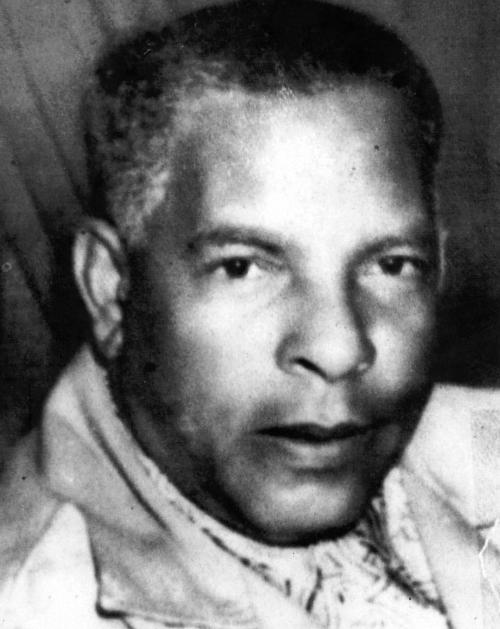
Courtesy Palm Springs Historical Society
Crossley’s Business Acumen
Crossley’s business acumen was on display in his role as the owner/watermaster of the Whitewater Mutual Water Co. (which served the north end of Palm Springs), and his ownership of the Tramview Water Co. He parlayed those investments into real estate development in Cathedral City including the Tramview Village and Eagle Canyon Trailer Village.
Crossley advocated for better housing for the Palm Springs African American community and was publicly acknowledged for his efforts in the early 1960s by the Los Angeles Sentinel. Crossley, “a long-time confidant of the tribe,” also assisted in developing Native American lands and was appointed as guardian for ten members of the Agua Caliente Band of Cahuilla Indians. He became a close friend of Chief Francisco Patencio and regularly participated in tribal rituals and programs.
During the early 1930s, Lawrence Crossley acquired approximately five acres of land south of Section 14, near the southwest corner of East Ramon Road and South Sunrise Way. This would become Crossley Court (a.k.a. Crossley Acres and Crossley Trailer Park). It is the first known example of land ownership by an African American in Palm Springs.
In September 1953, Lawrence Crossley sold the five-acre compound to the adjacent Ramon Trailer Park. He announced plans for a new subdivision two miles east of the city and a mile south of Ramon Road.
Crossley Tract
The Crossley Tract (a.k.a. Crossley Gardens and Crossley Estates) was a 77-parcel subdivision bordered by 34th Avenue on the north, Martha Street on the south, the east side of Maguerite Street on the east, and the west side of Lawrence Street on the west. The new subdivision would accommodate the displaced tenants of Crossley Court. Original plans called for 32 of the 37 homes from the Ramon acreage to be relocated to the new subdivision of 79 lots.
Crossley appears to have developed a partnership with the Sun-Spa Development Corporation. Sun-Spa Development's president, Al Casey, explained, “We’re particularly interested in providing immediate, low-cost housing for residents forced to move from Section 14 because of the new Indian Land Leasing Agreements.” Section 14 was being developed for commercial use, and residential leases were not renewed.
The Crossley Tract (also referenced in the early press as Crossley Estates and later Crossley Gardens) consisted of a series of modest, three-bedroom, 2.5-bath minimal traditional-style homes. Grading began in the spring of 1958, and the first home was ready for occupancy by September. In 1959, the Crossley Tract was annexed into the City of Palm Springs. Crossley died in 1961 before it could be completed, and the project faltered.
Read more: Lawrence Crossley: Palm Springs' First Black Entrepreneur and Developer
Mayor Ron Oden
Ron Oden moved to Palm Springs in 1990 to become a sociology instructor at College of the Desert. He holds a Master of Arts degree in Theology and Ethnic Studies. He successfully ran for City Council in 1995, serving eight years. In 2003, he became the first African American mayor of Palm Springs. He also became the first black and openly gay man to be mayor of a US city and made global headlines.
Oden's tenure as mayor was notable for his work promoting organizations focused on diversity, including the Palm Springs Human Rights Task Force and the Palm Springs Human Rights Commission. The city's budget doubled during his term as tourism grew.
Great Palm Springs Pride awarded Oden the Lifetime Achievement Award at the 2019 Pride Honors Awards. He serves as College of the Desert Board of Trustees, Area 3.
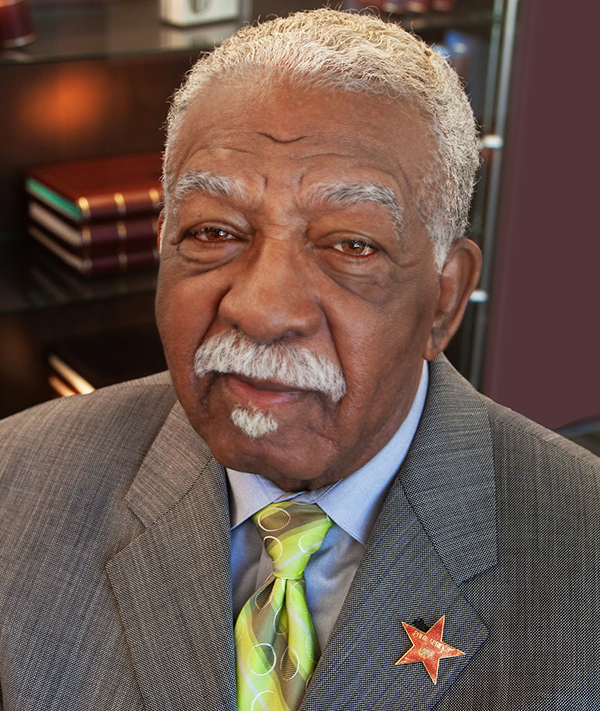
Brothers of the Desert
Brothers of the Desert is a non-profit organization that builds a support network for Black gay men and allies in the Coachella Valley, offering services like philanthropy, mentorship, education, and advocacy. Founded in 2017 in response to isolation within the community, the organization began by assessing the needs of long-standing Black gay residents. It later partnered with Better Brothers of LA in 2019 to raise funds for scholarships, officially incorporating as a 501(c)(3) in 2020. Since then, Brothers of the Desert has awarded over $10,000 in scholarships to LGBTQ+ and Black students, hosted events like a Wellness Summit and annual New Year’s Eve fundraiser, and organized a speaker series, social gatherings, and a monthly newsletter. The organization thrives through partnerships with groups such as Coachella Valley Repertory and the LGBTQ Community Center of the Desert, and its monthly meetings are open to Black/African-American men identifying as gay, queer, bisexual, or same-gender-loving, as well as allies from all backgrounds.
In 2024, they won the Trailblazer Award from the Palm Springs Black History Committee.
Take a Palm Springs Black History Tour